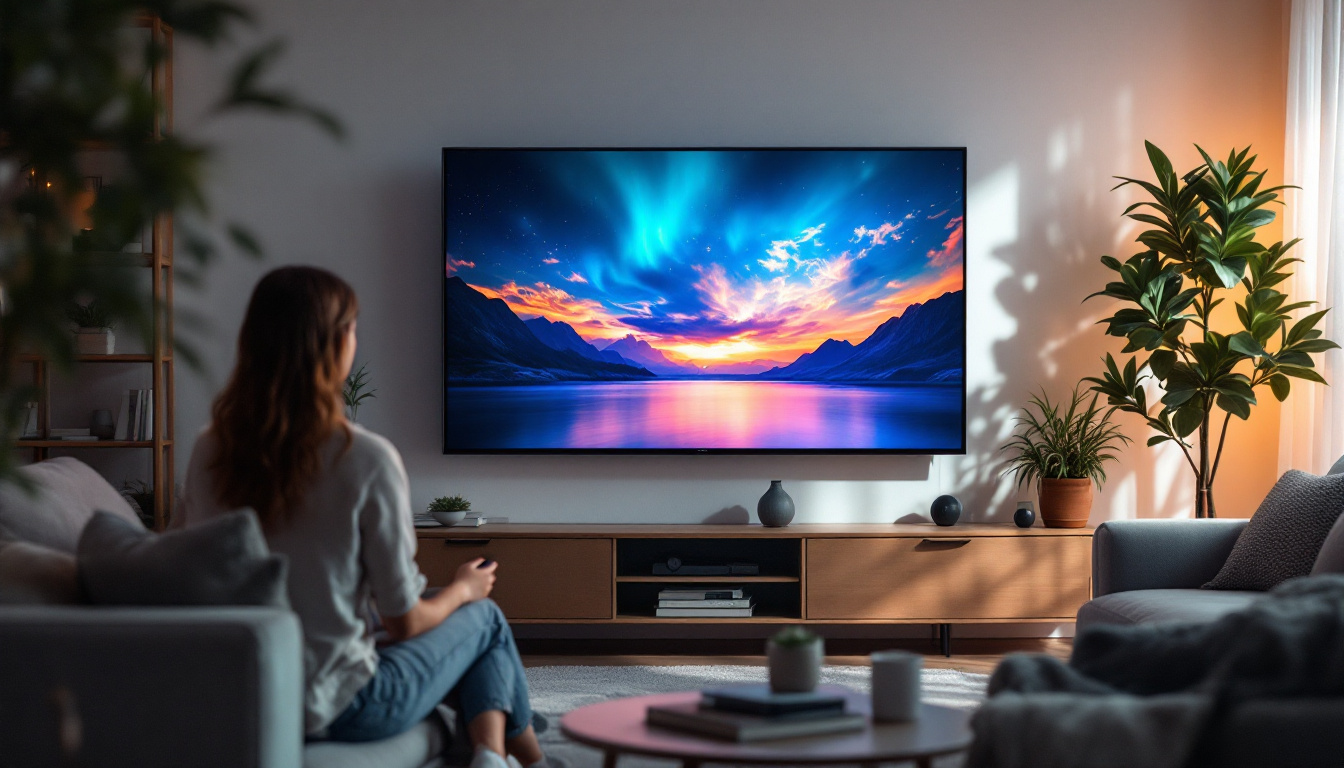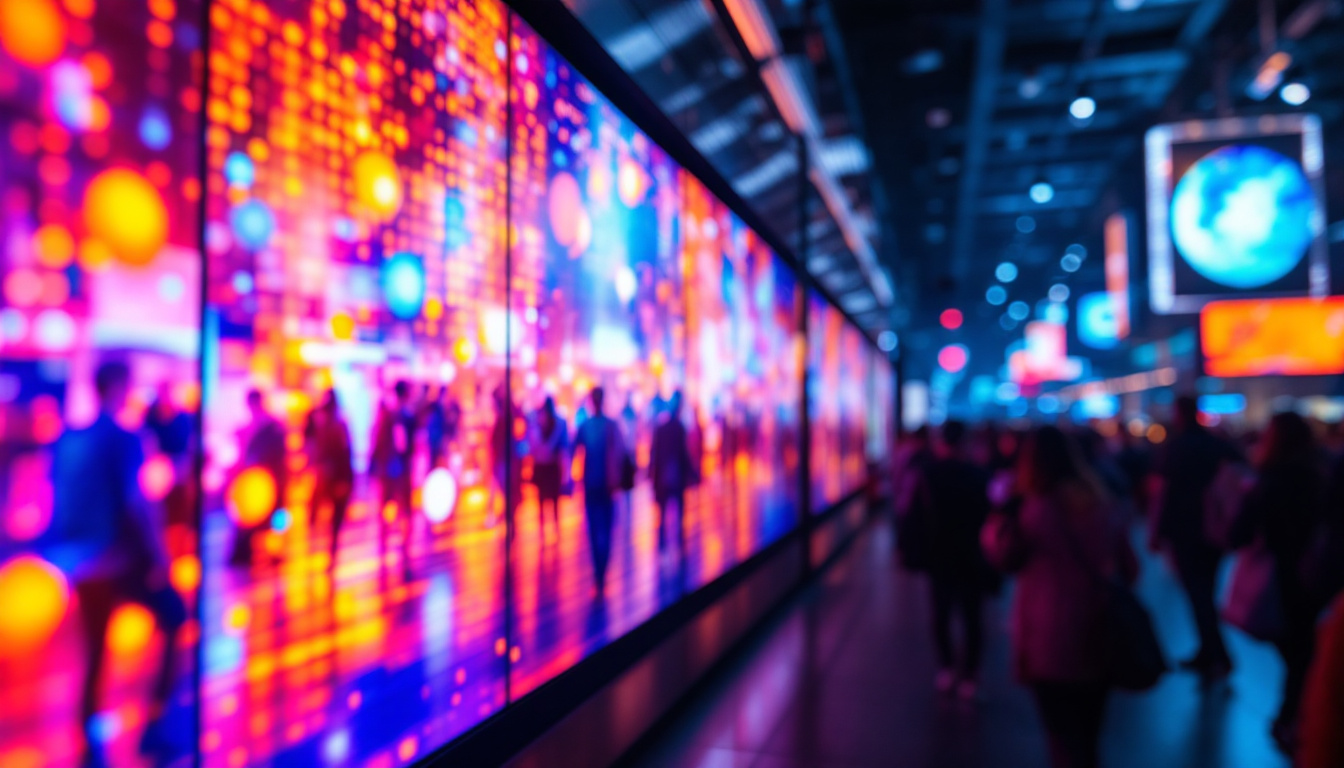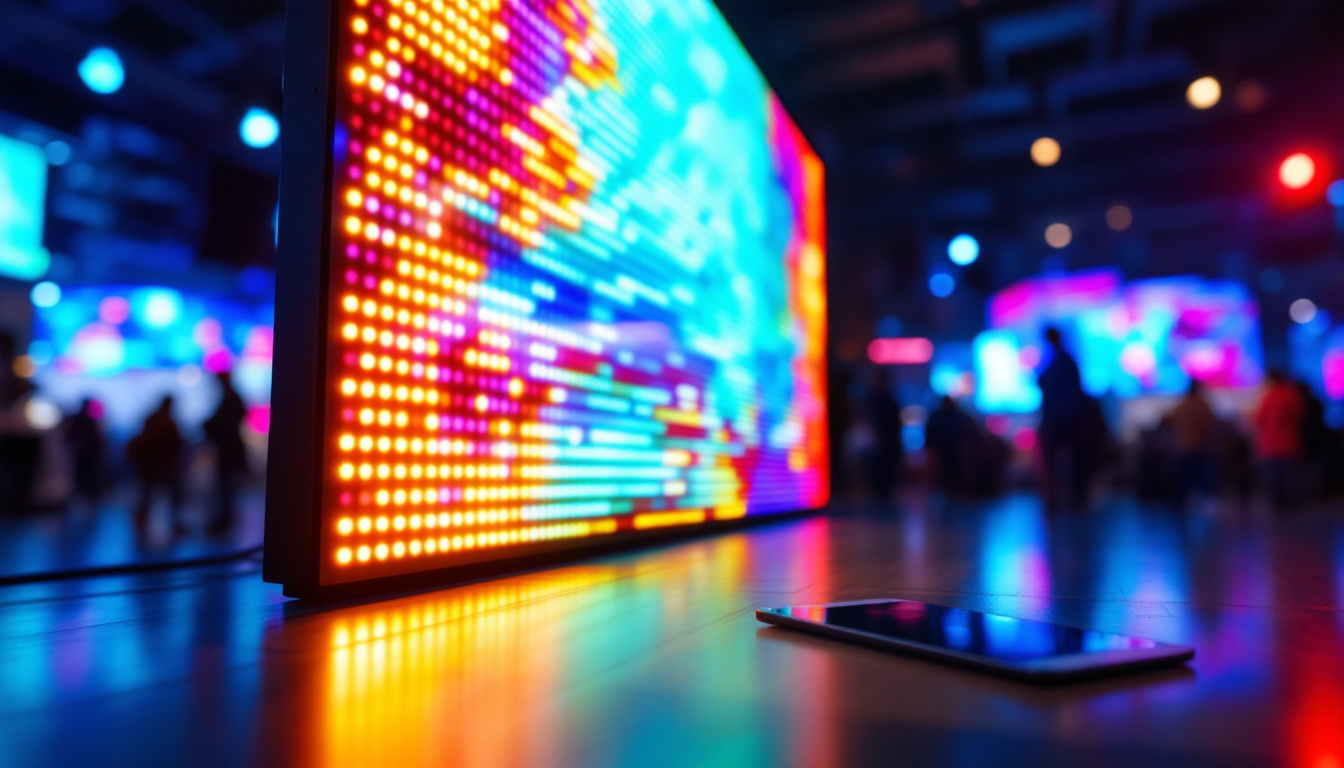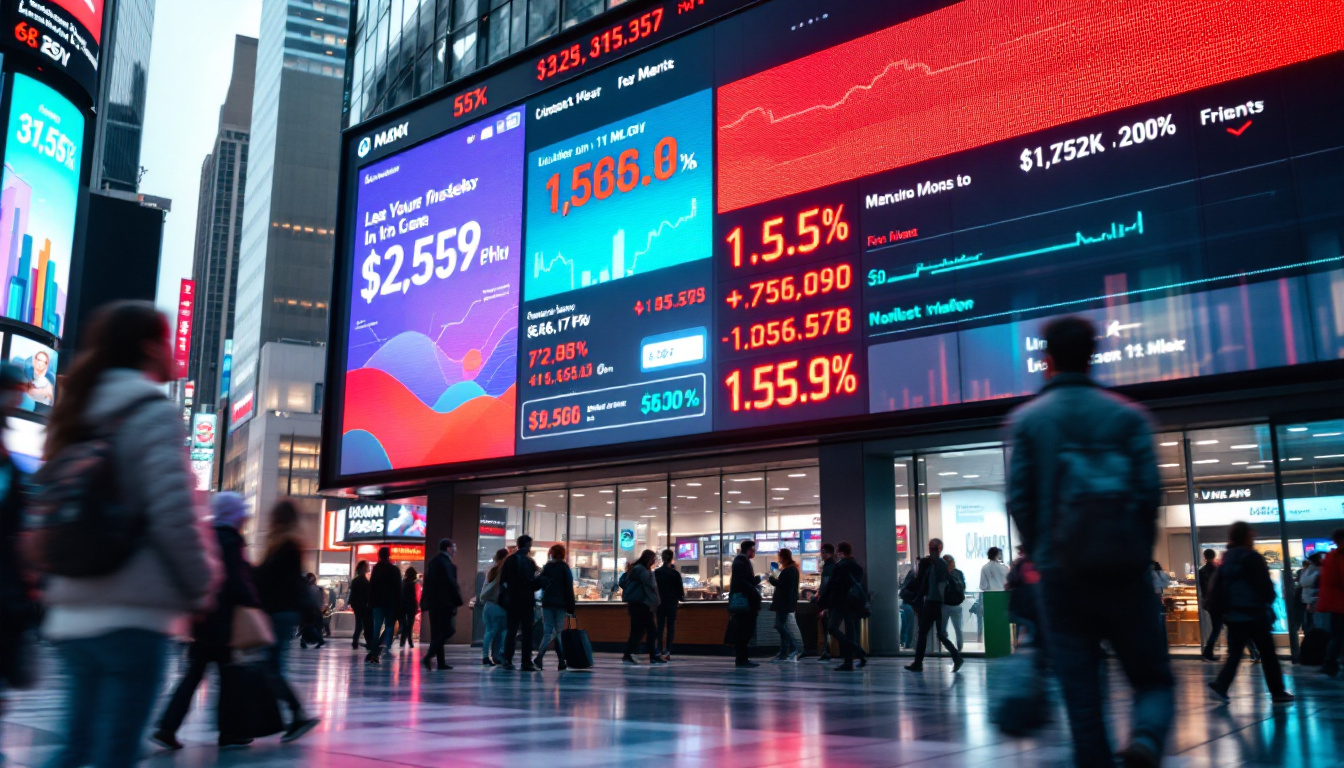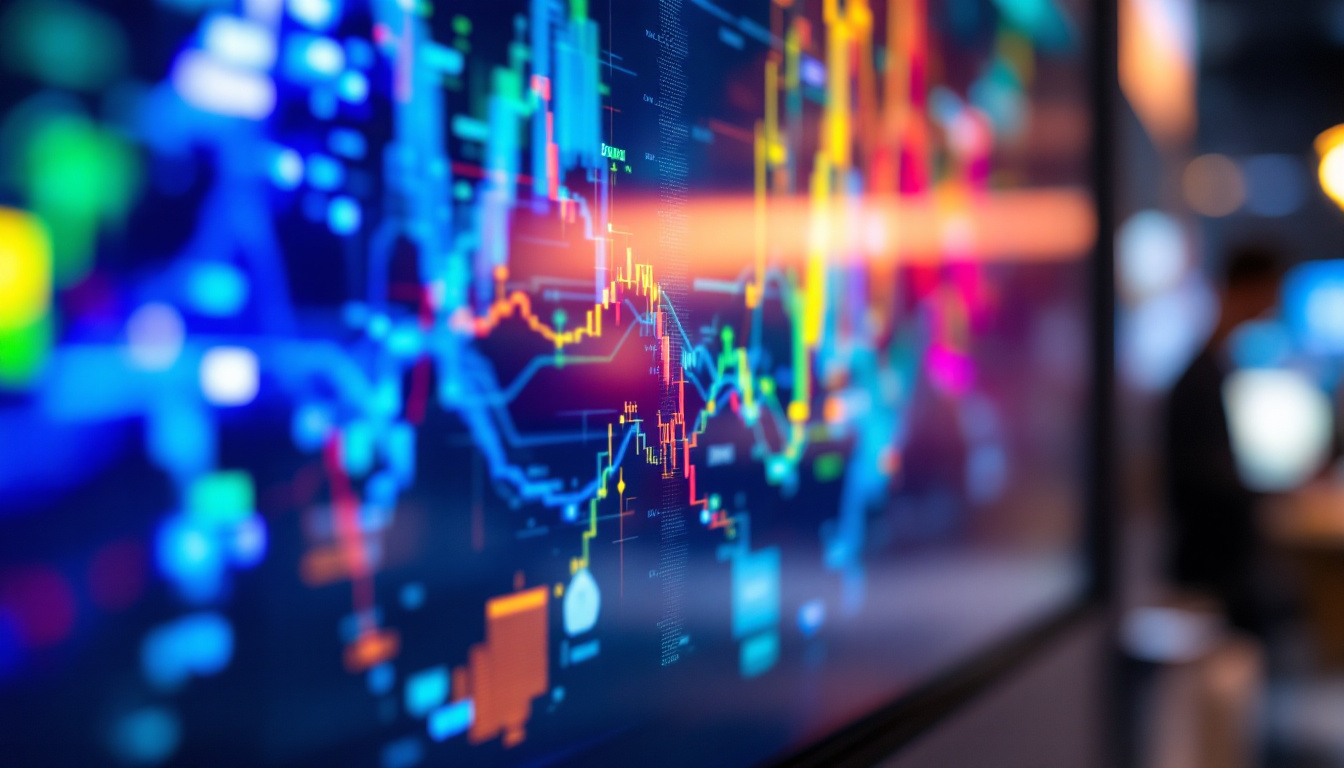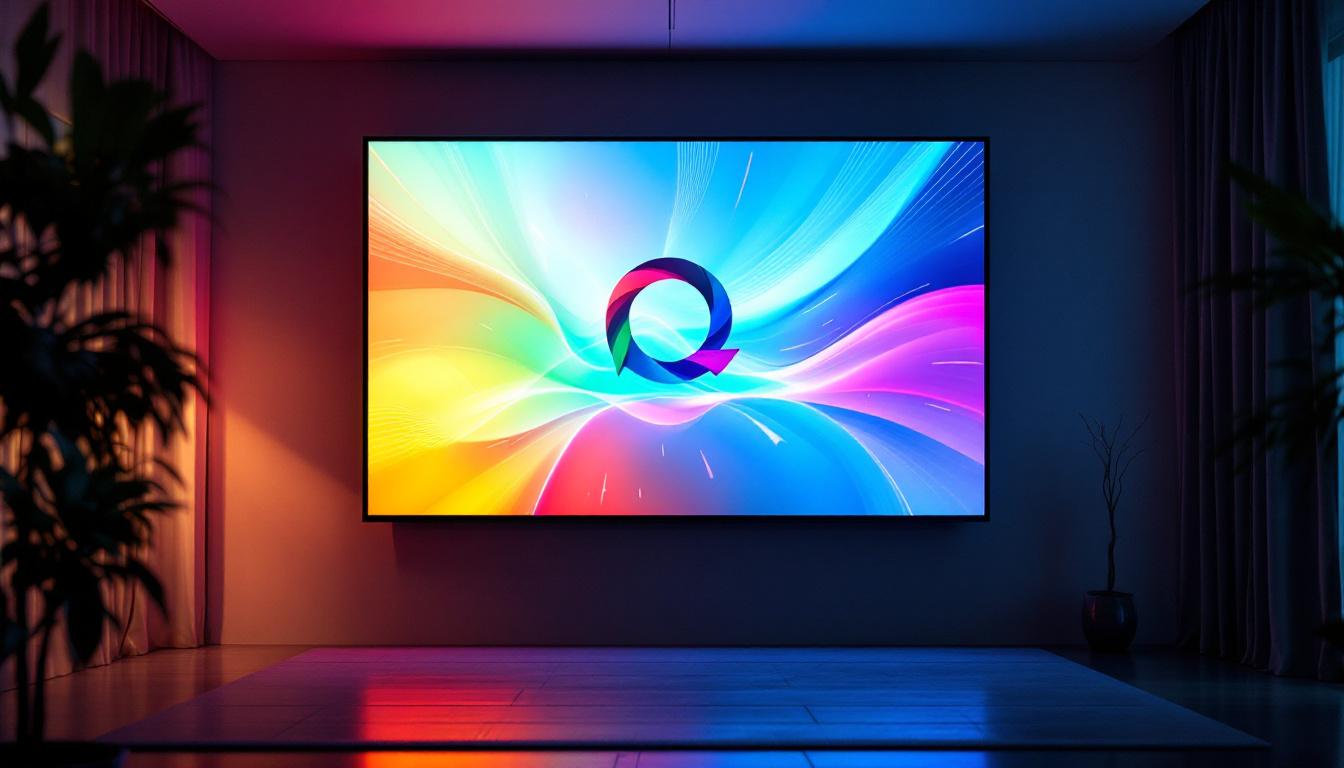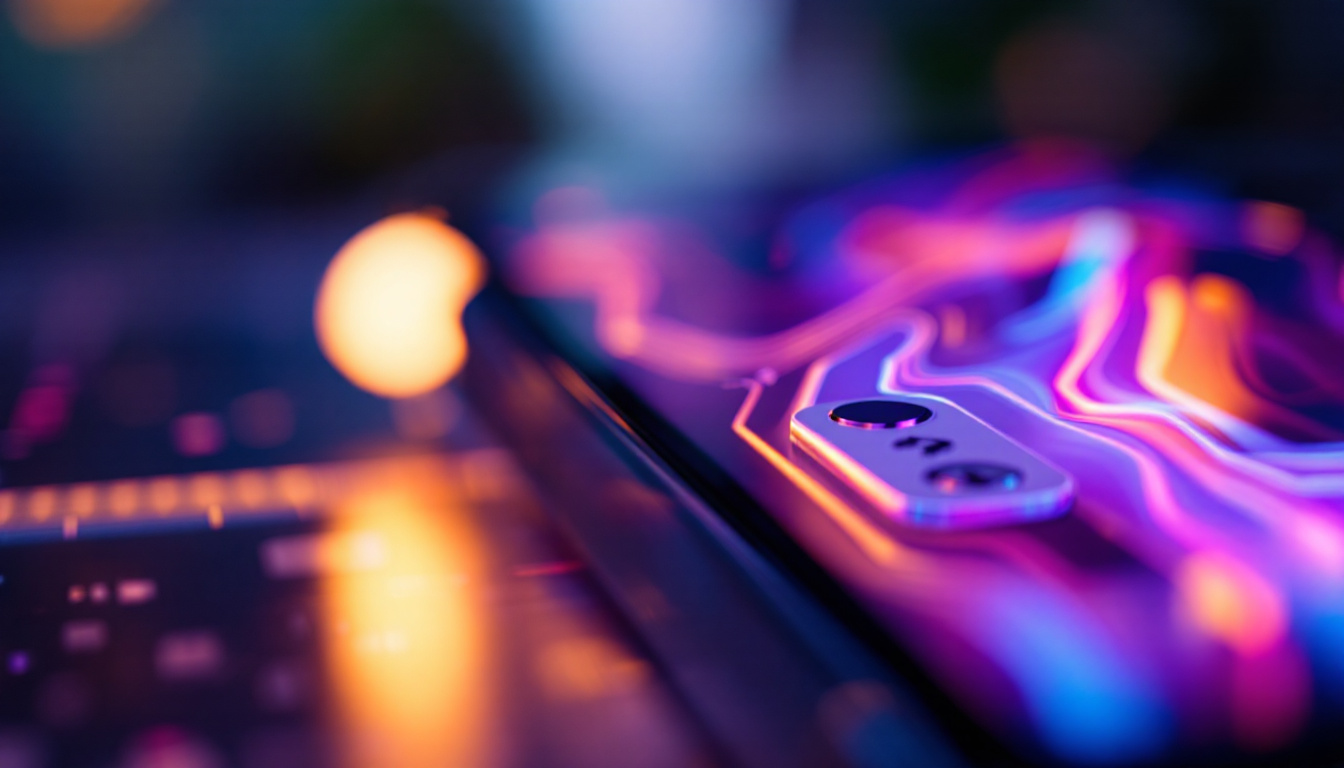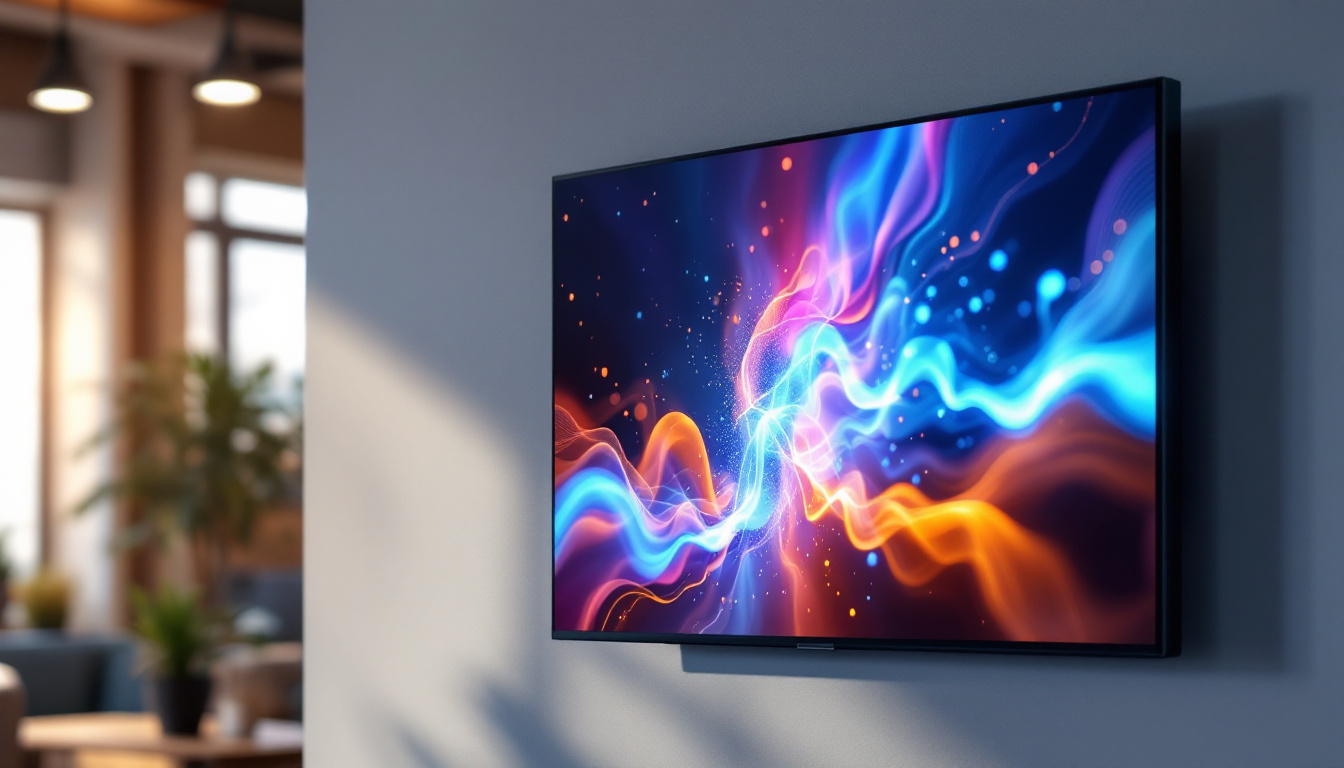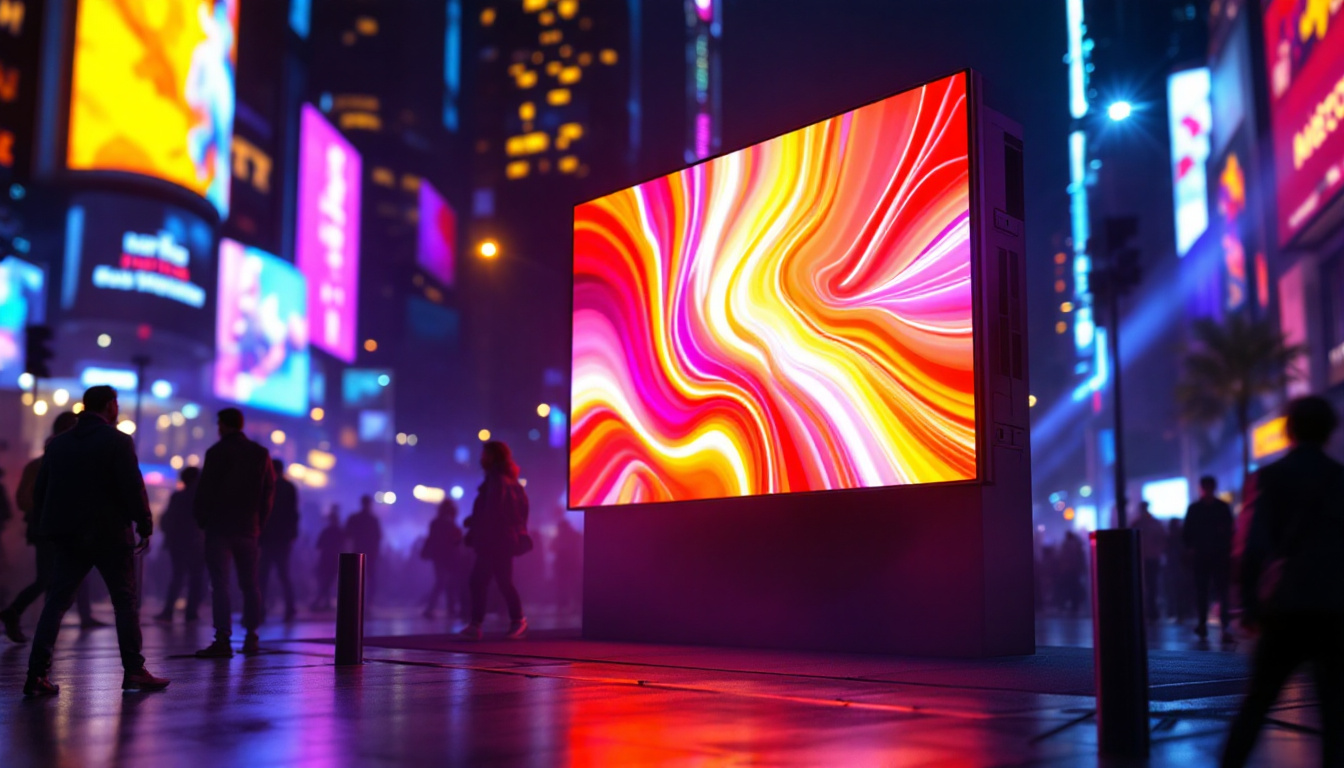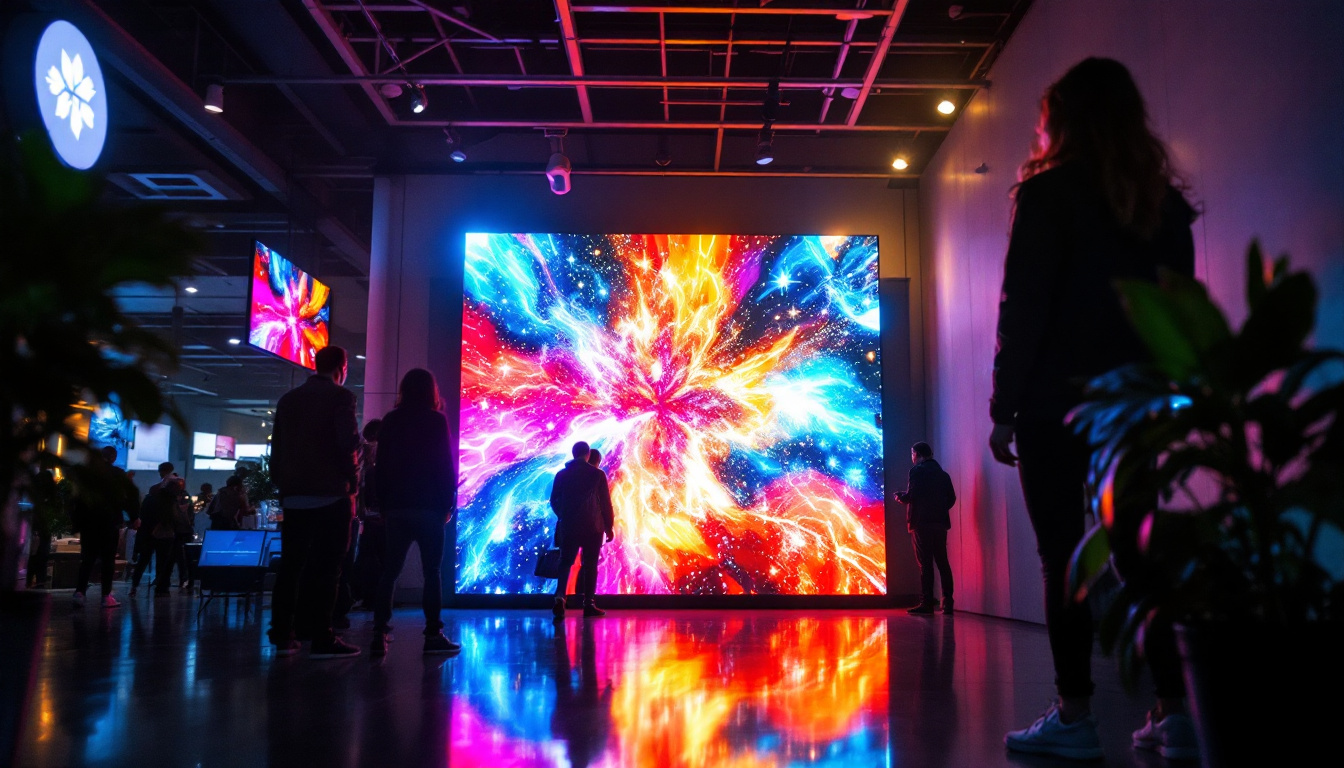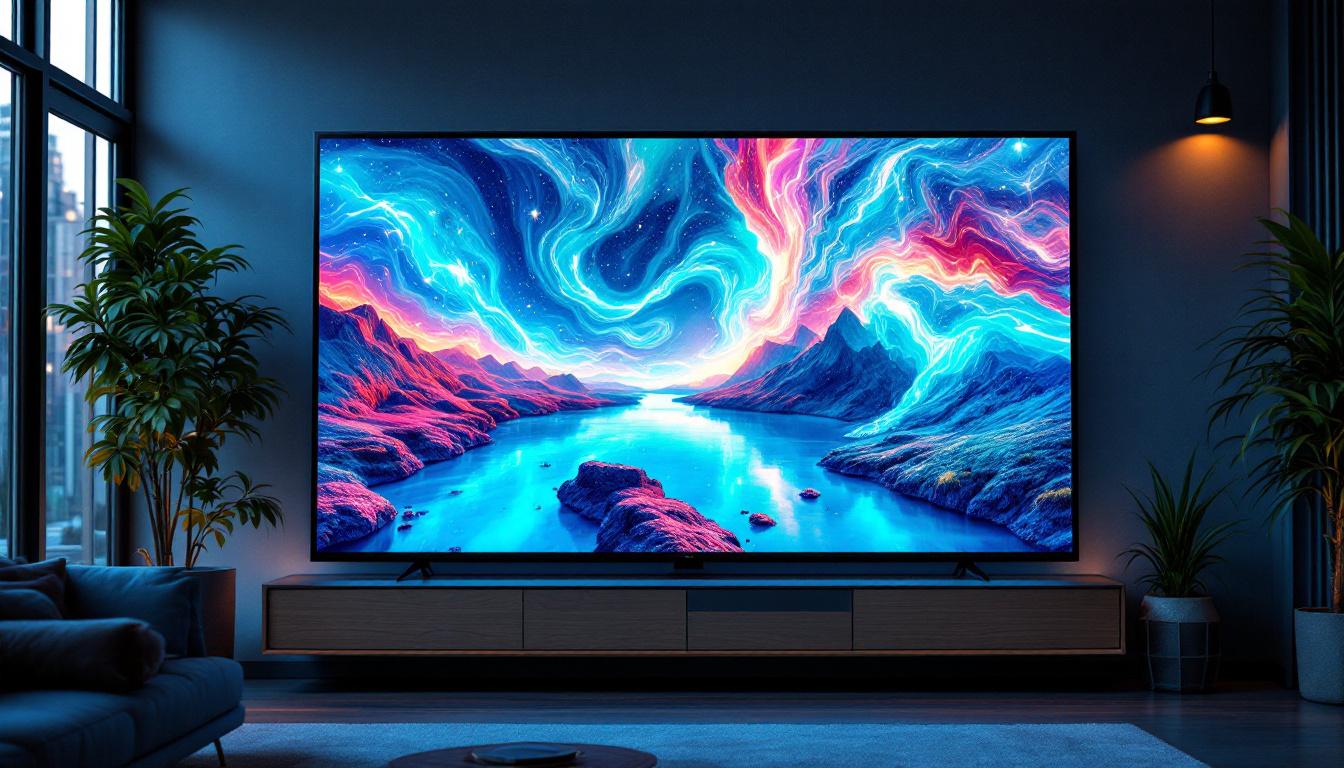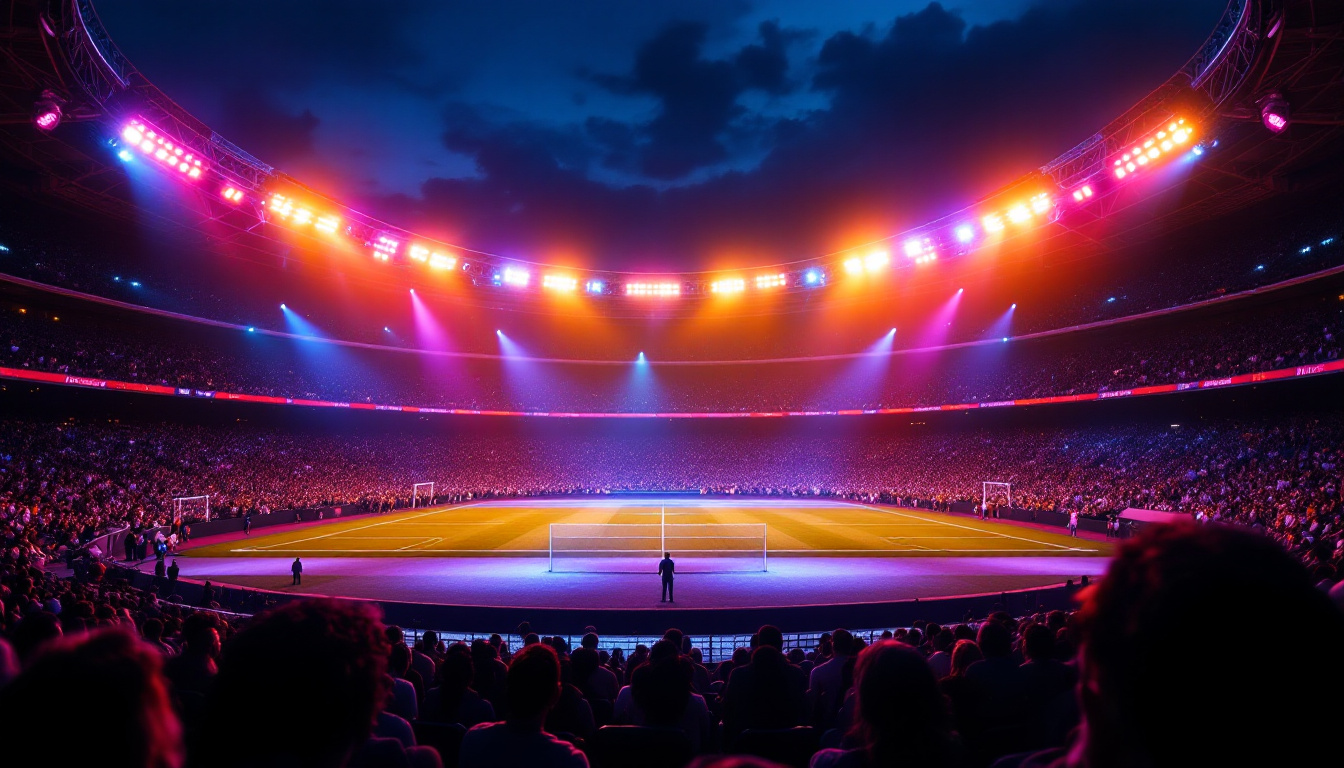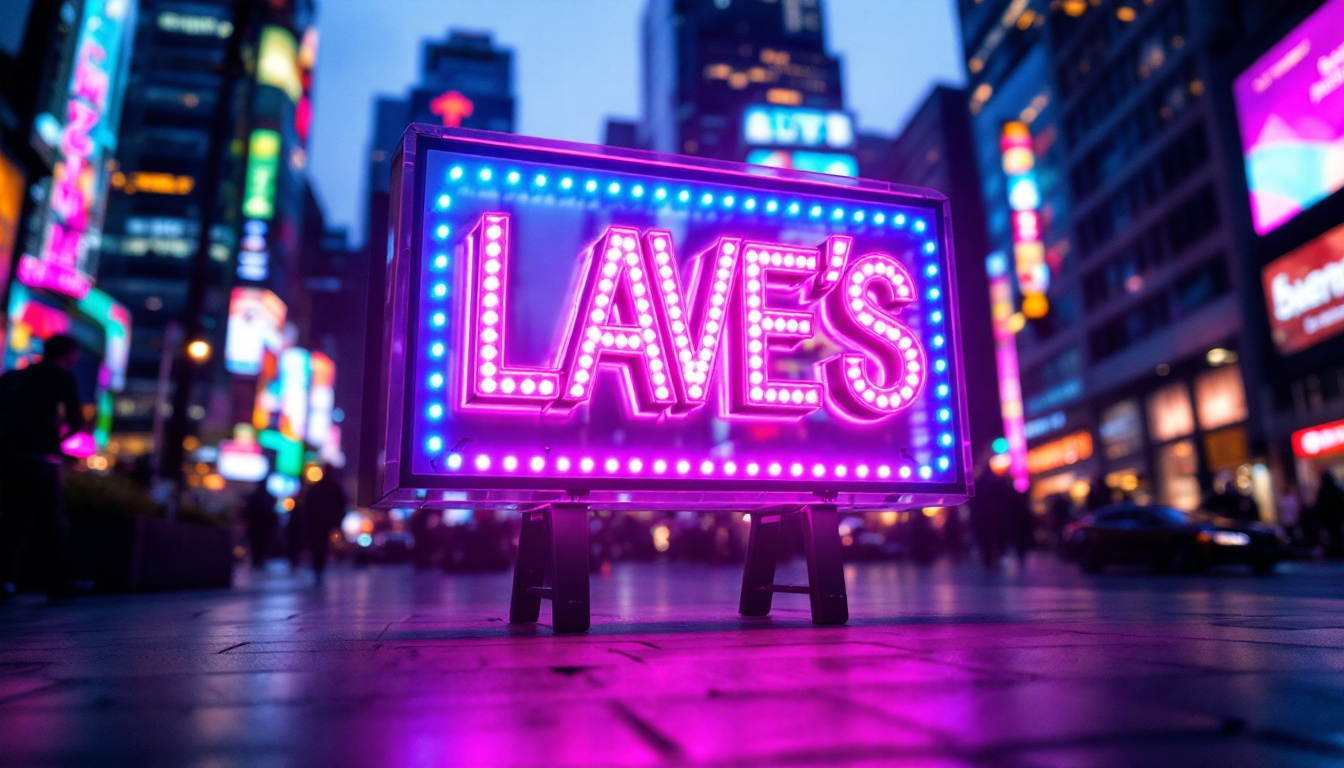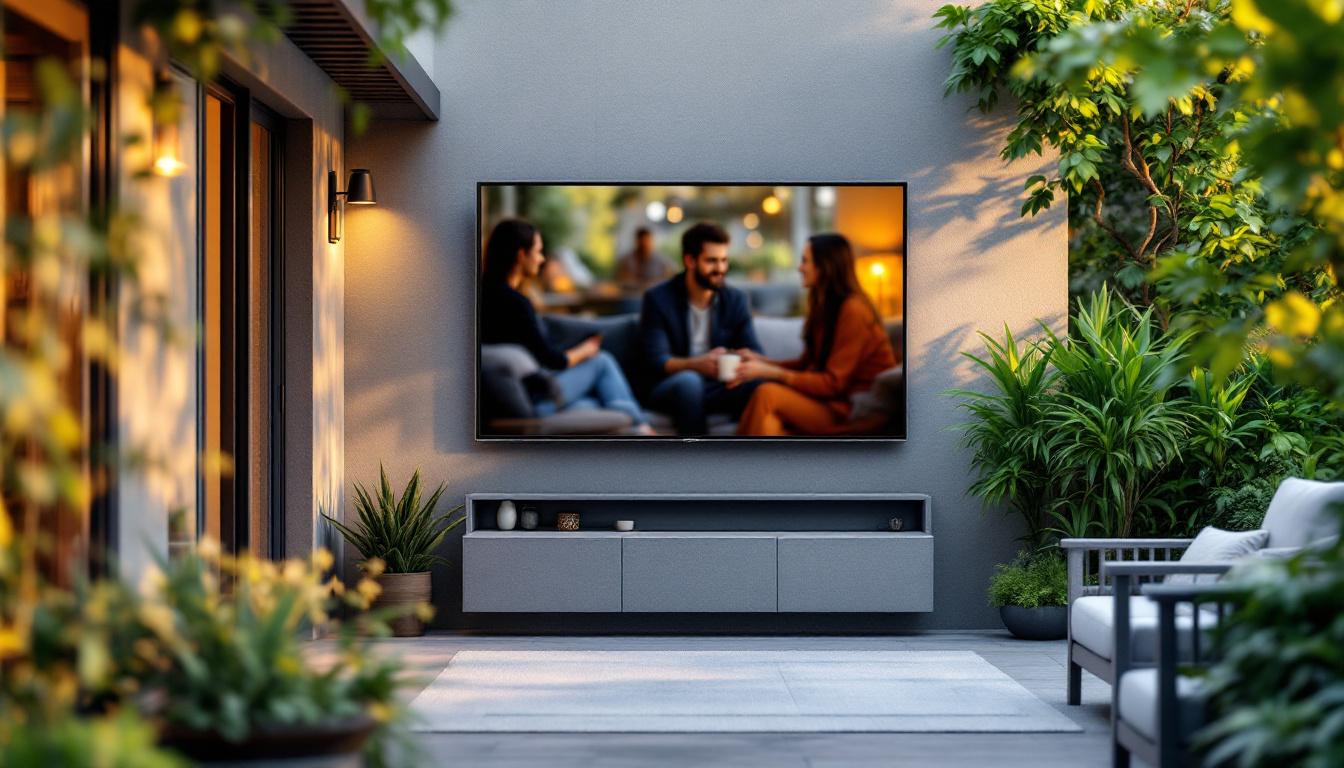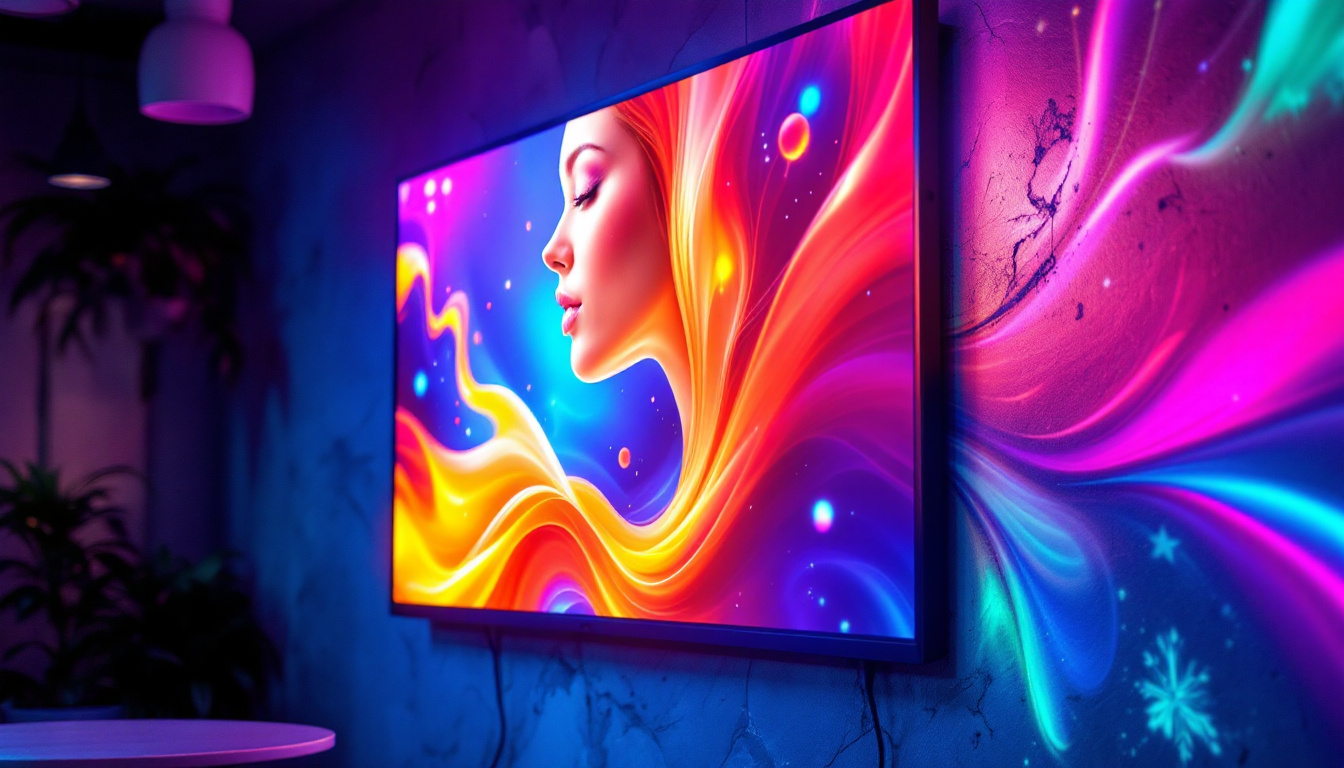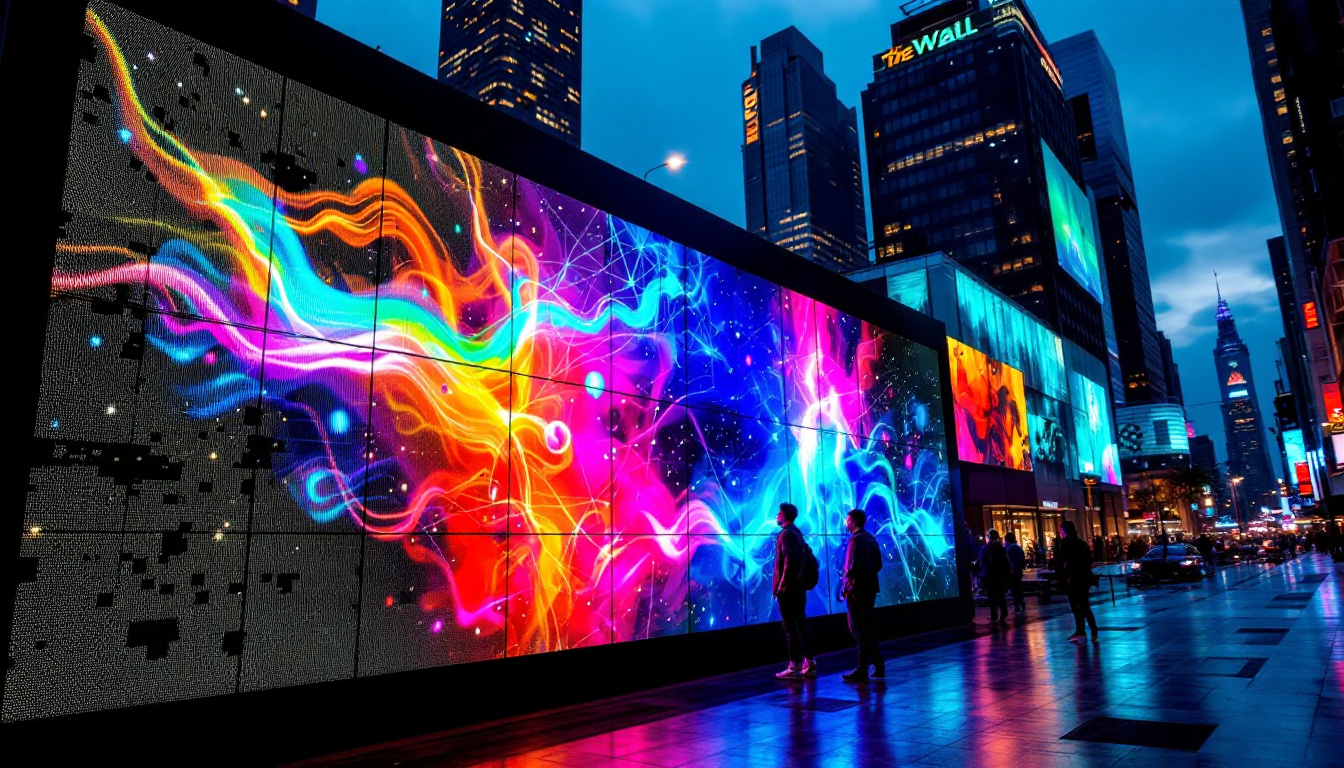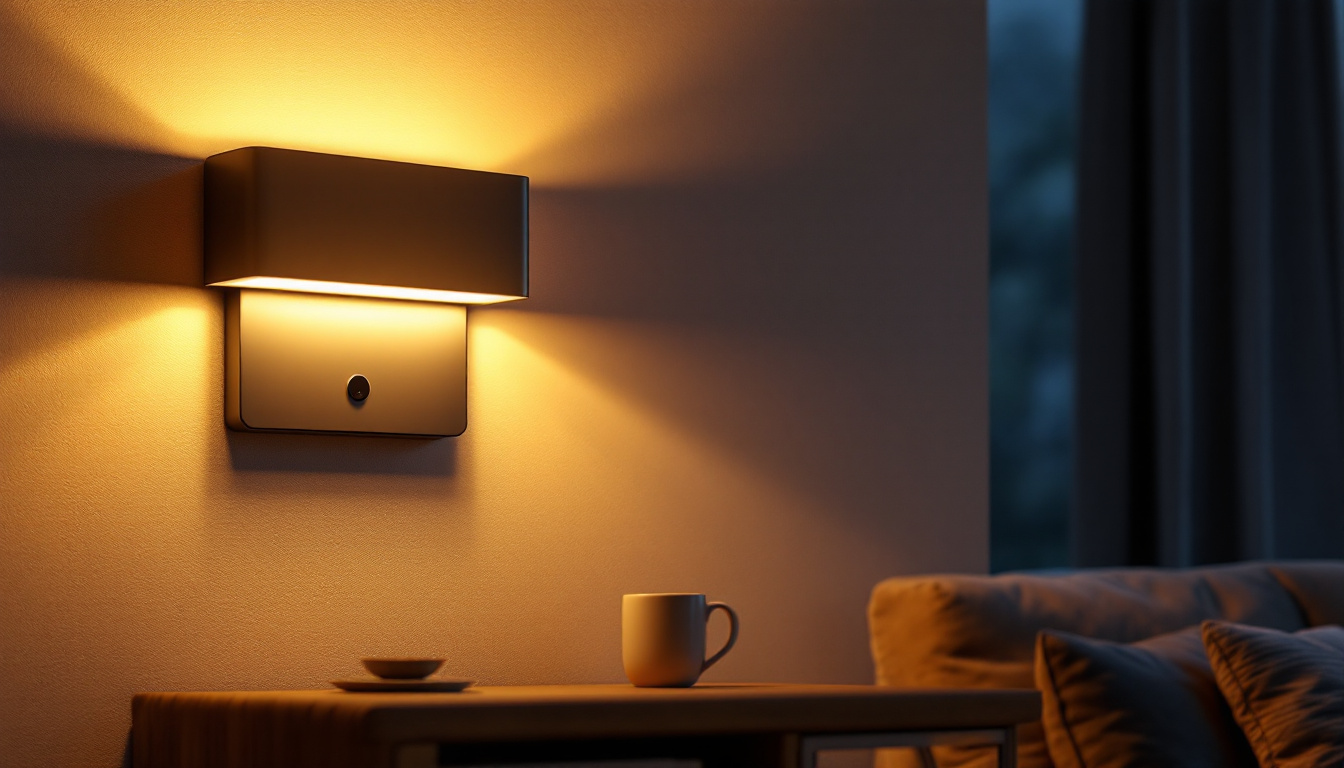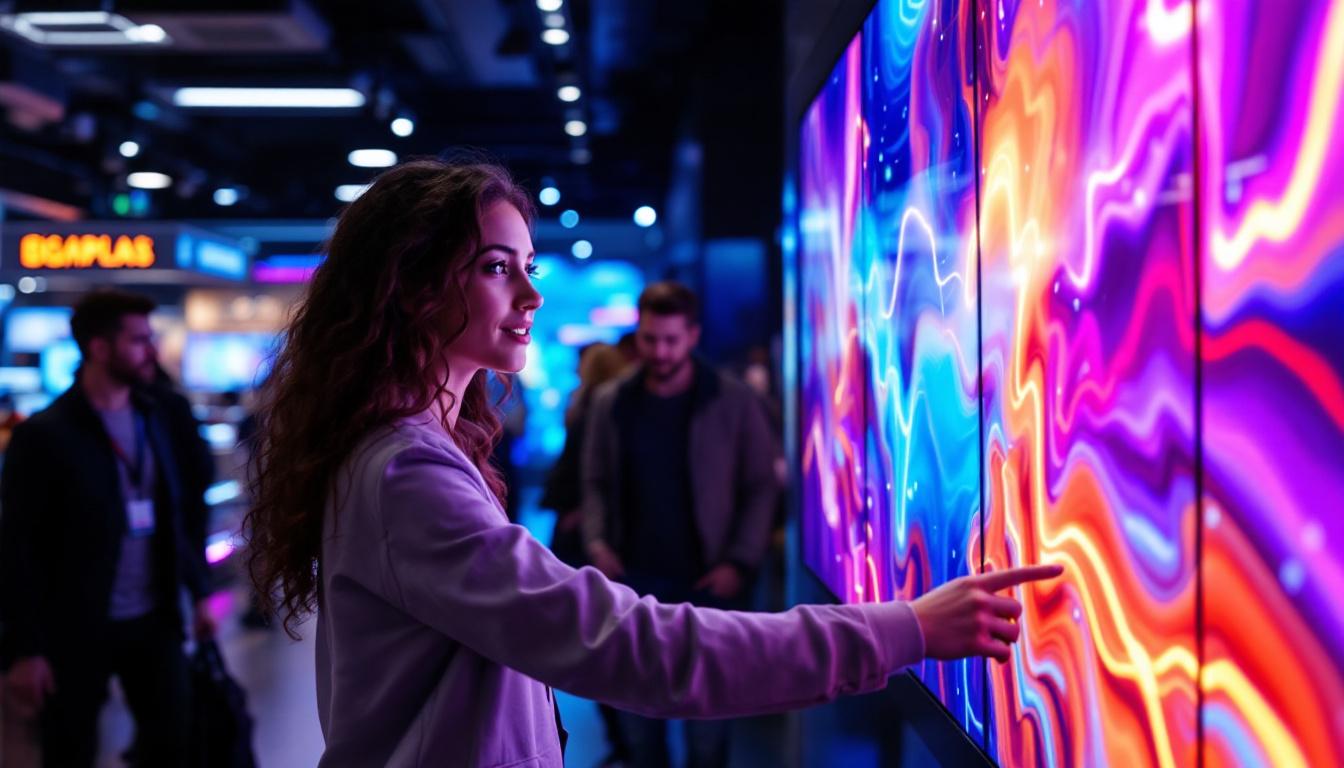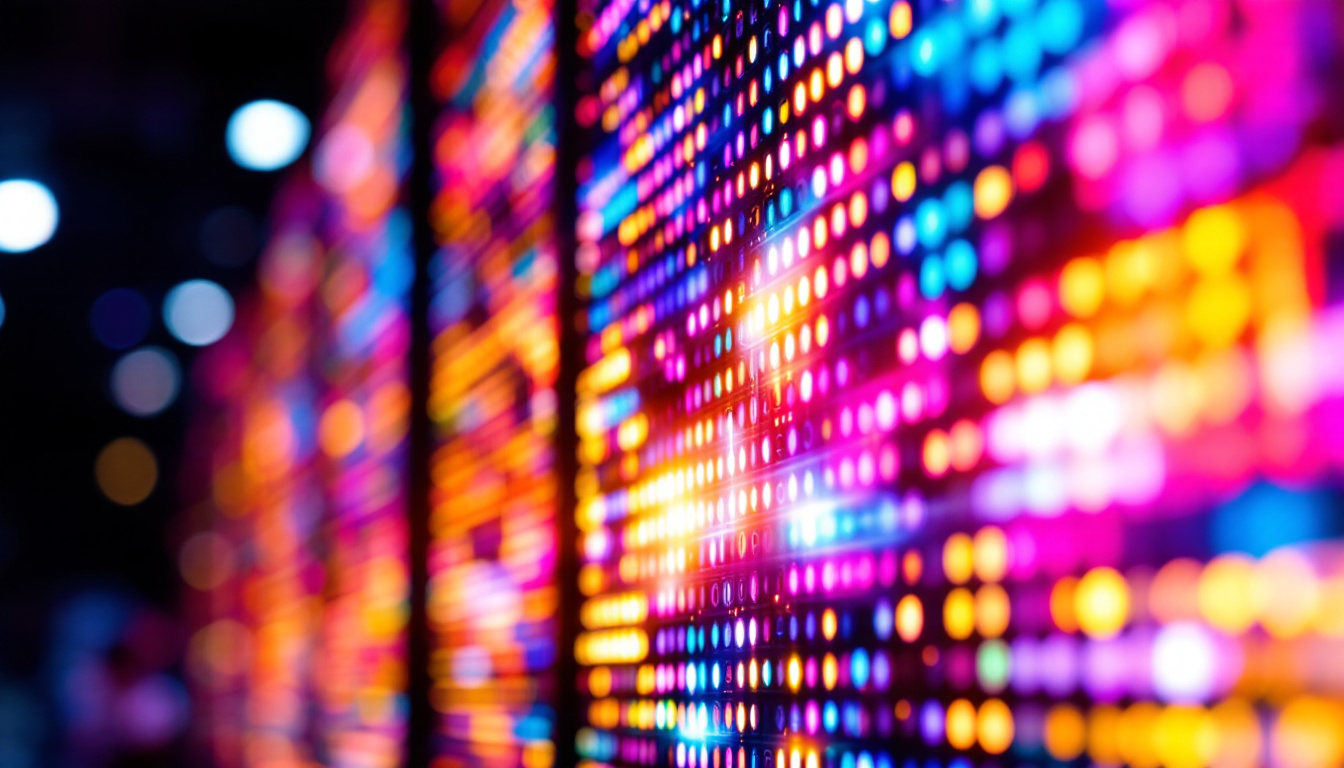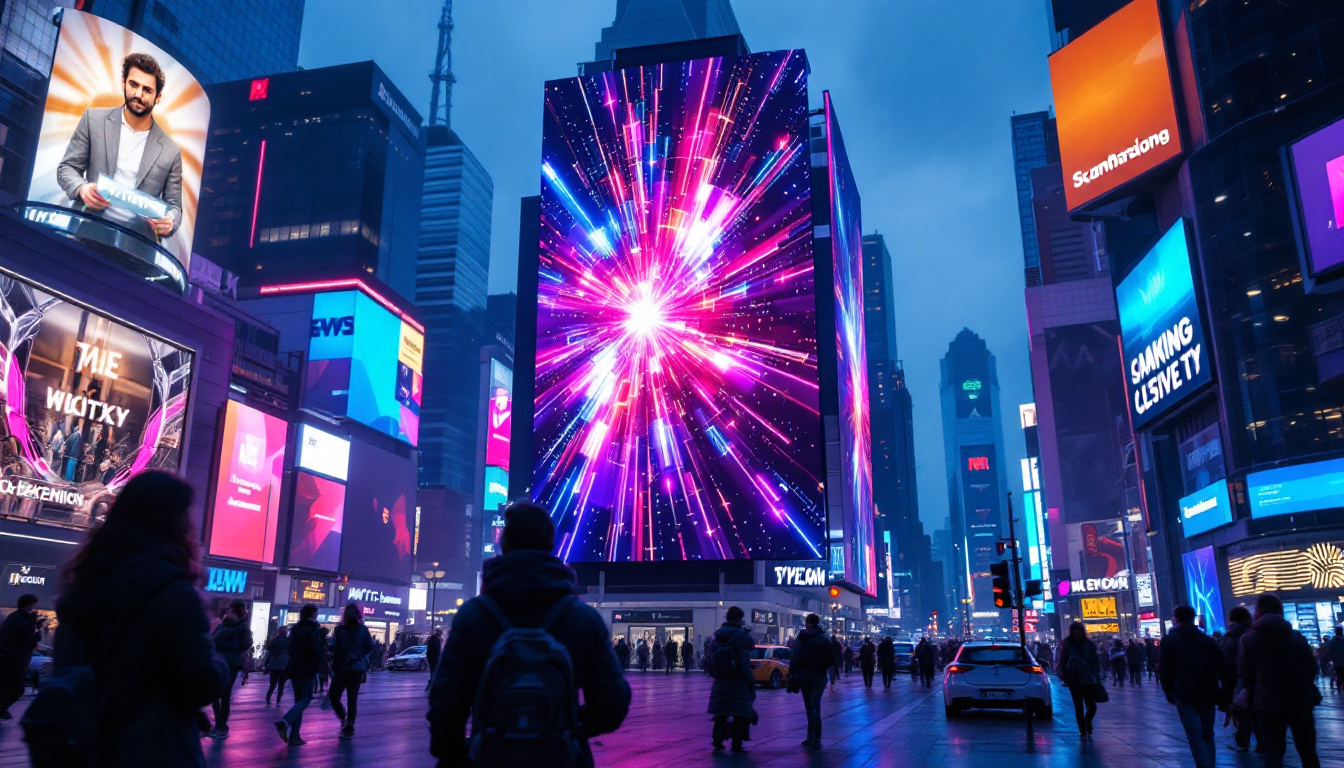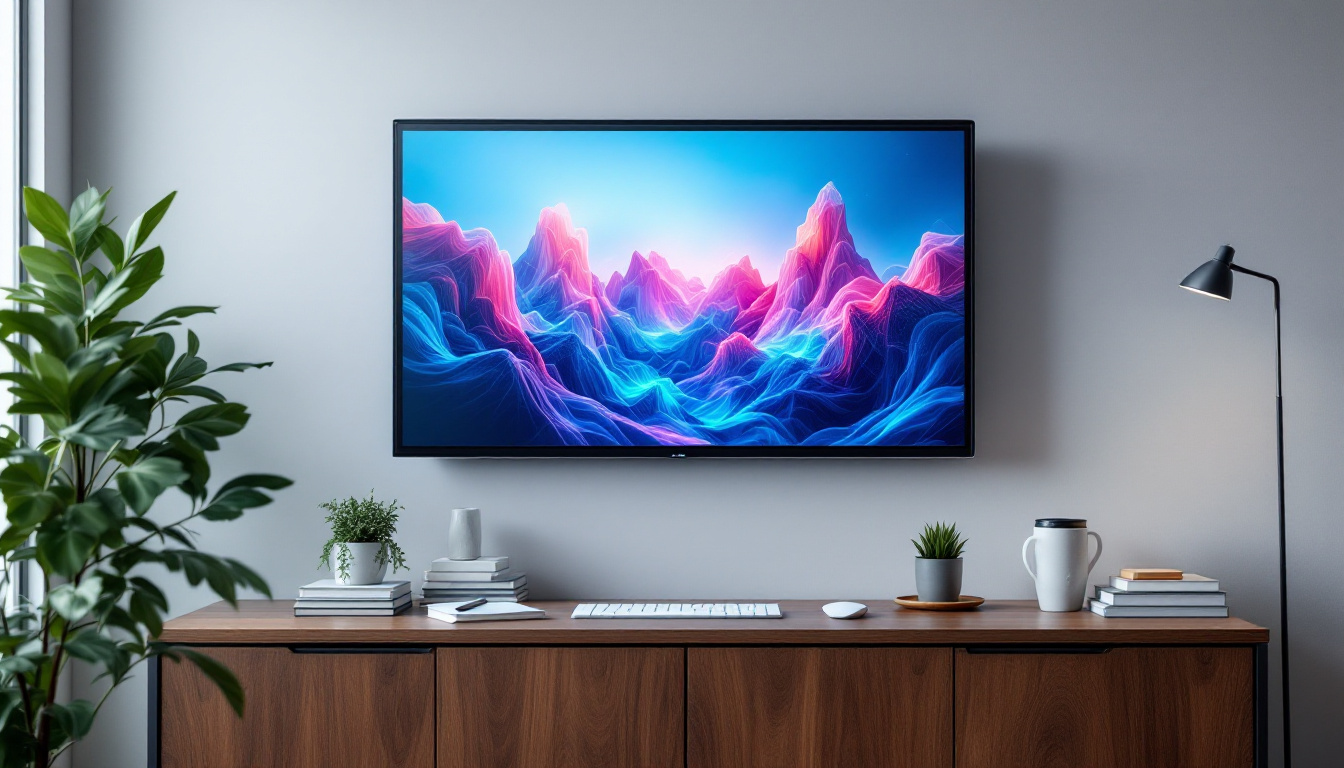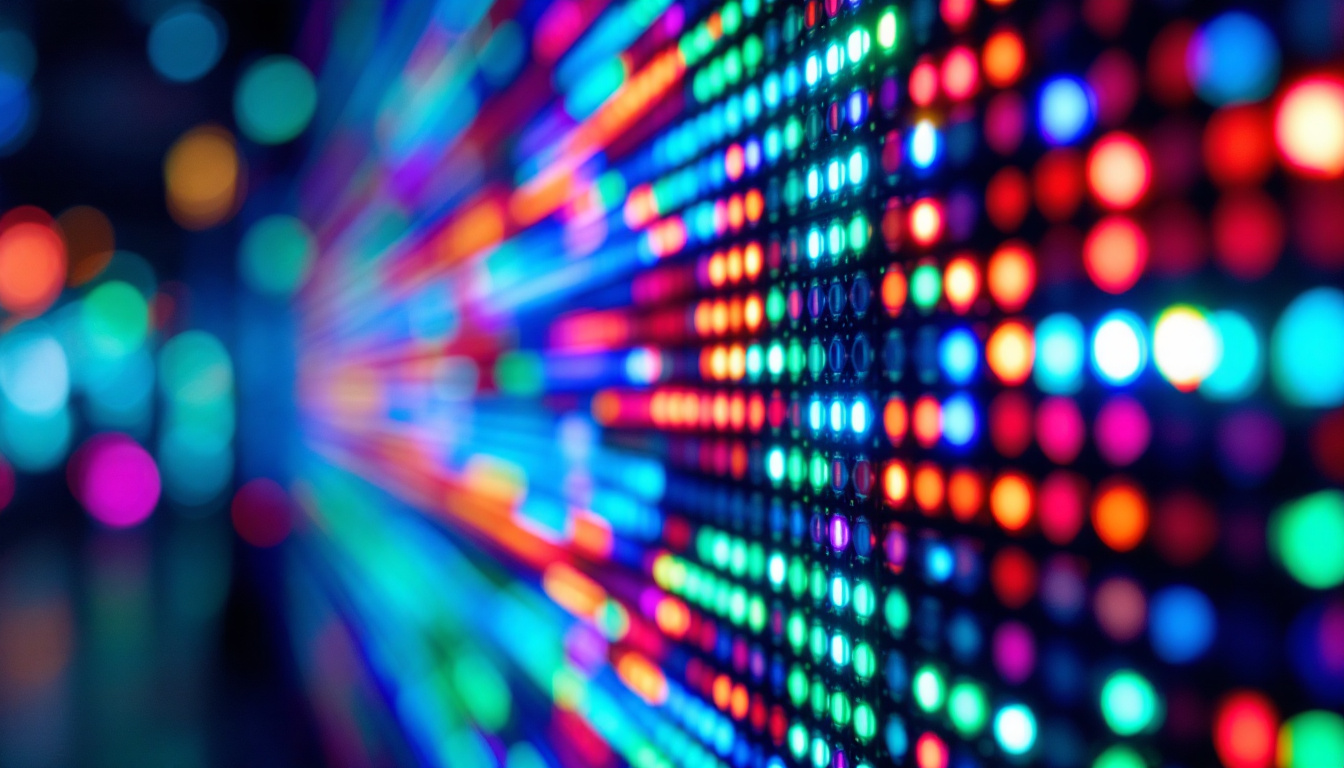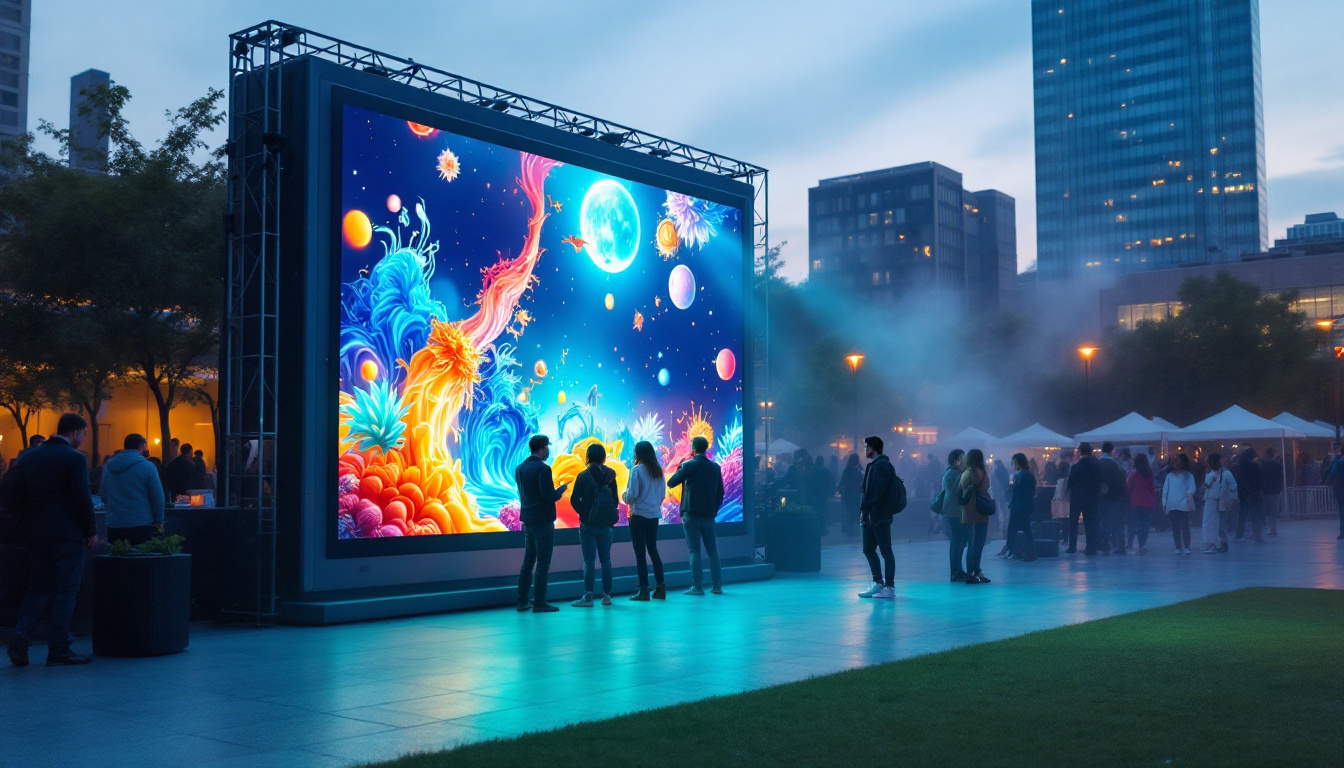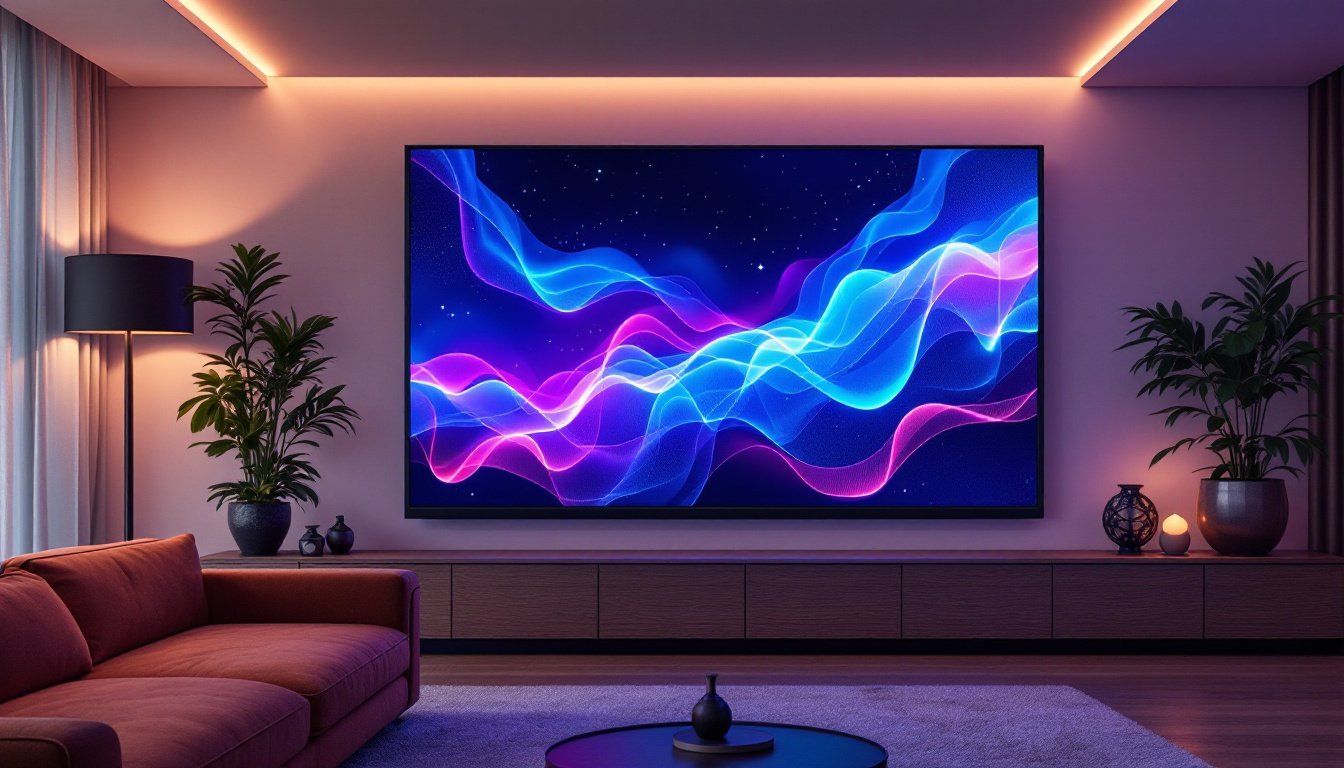In the realm of modern technology, television displays have evolved significantly, with LED technology leading the charge. Simplicity TV, a brand that embodies minimalist design and cutting-edge technology, has integrated LED displays to enhance the viewing experience. This article delves into the intricacies of LED displays, exploring their functionality, advantages, and how they compare to other display technologies.
Understanding LED Technology
LED, or Light Emitting Diode, technology has transformed the way images are displayed on screens. Unlike traditional LCD screens that rely on fluorescent backlighting, LED displays utilize small diodes that emit light when an electric current passes through them. This fundamental difference leads to various enhancements in picture quality, energy efficiency, and overall performance. The shift to LED technology has not only improved the viewing experience for consumers but has also paved the way for more innovative applications in various fields, including advertising, medical imaging, and even automotive lighting.
How LED Displays Work
The core principle behind LED displays lies in their ability to produce light directly from the diodes. In a typical LED display, thousands of these diodes are arranged in a grid. Each diode can emit different colors, and by adjusting the intensity of these colors, the screen can create a full spectrum of hues. This results in vibrant images with deeper contrasts and more accurate color reproduction. The responsiveness of LED technology also allows for faster refresh rates, making it ideal for dynamic content such as video games and sports broadcasts, where clarity and fluid motion are paramount.
LED displays can be categorized into two main types: edge-lit and full-array. Edge-lit displays have LEDs positioned along the edges of the screen, while full-array displays feature a grid of LEDs behind the entire screen. Full-array displays typically offer better contrast and uniformity, making them a preferred choice for high-end televisions. Additionally, advancements in local dimming technology, which allows certain areas of the screen to dim independently, further enhance the contrast ratio and improve the overall viewing experience, particularly in dark scenes.
Key Components of LED Displays
Several components work in harmony to deliver the stunning visuals associated with LED displays. The primary components include:
- LED Backlight: This is the source of illumination for the screen, crucial for producing bright and vivid images.
- Liquid Crystal Display (LCD) Panel: The LCD panel modulates the light from the backlight to create images. It is responsible for color reproduction and image clarity.
- Control Electronics: These components manage the power supply and signal processing, ensuring that the display operates smoothly and efficiently.
In addition to these core components, the integration of advanced technologies such as quantum dots has further enhanced LED displays. Quantum dot technology allows for a wider color gamut and improved brightness levels, providing an even more immersive viewing experience. Furthermore, manufacturers are increasingly focusing on reducing the environmental impact of LED displays by utilizing recyclable materials and energy-efficient production processes, making LED technology not only a choice for superior performance but also a more sustainable option for consumers.
Advantages of LED Displays
LED displays offer numerous advantages over traditional display technologies. Understanding these benefits can help consumers make informed decisions when purchasing a television.
Enhanced Picture Quality
One of the most significant advantages of LED displays is their superior picture quality. The ability to produce deeper blacks and brighter whites leads to a higher contrast ratio, which enhances the overall viewing experience. Colors appear more vibrant and true-to-life, making LED displays a popular choice for movie enthusiasts and gamers alike. Furthermore, many LED displays come equipped with advanced technologies such as HDR (High Dynamic Range), which further elevates the visual experience by expanding the range of colors and brightness levels. This means that viewers can enjoy a more immersive experience, whether they’re watching the latest blockbuster or playing their favorite video game.
Energy Efficiency
LED technology is renowned for its energy efficiency. LED displays consume less power compared to traditional LCDs and plasma screens. This not only reduces electricity bills but also contributes to a smaller carbon footprint, making LED displays an environmentally friendly option. Additionally, many manufacturers are now focusing on sustainable practices, ensuring that their production processes are as eco-friendly as possible. By choosing an LED display, consumers are not only saving on energy costs but also supporting a shift towards greener technology in the electronics industry.
Longevity and Durability
LED displays are designed to last longer than their counterparts. With a lifespan that can exceed 50,000 hours, they provide excellent value for money. Additionally, LED technology is less susceptible to screen burn-in, a common issue with plasma displays, ensuring that the quality of the image remains consistent over time. This durability is complemented by the robust design of LED screens, which often feature scratch-resistant glass and sturdy frames, making them ideal for both home use and commercial applications. As a result, businesses can rely on LED displays for advertising and information dissemination without the constant need for replacement, further enhancing their cost-effectiveness.
Comparing LED Displays to Other Technologies
While LED displays are widely regarded as the superior choice for televisions, it is essential to compare them to other technologies to understand their unique advantages.
LED vs. OLED
Organic Light Emitting Diodes (OLED) is another popular display technology. Unlike LED displays, which use a backlight, OLED screens produce light at the pixel level, allowing for even greater contrast and color accuracy. However, OLED displays are generally more expensive and can be prone to burn-in issues.
In terms of picture quality, OLED often outperforms LED, especially in dark environments. However, LED displays excel in brightness and are more suitable for well-lit rooms, making them a versatile option for various viewing conditions. Additionally, LED technology has seen significant advancements, with the introduction of Mini-LED and Micro-LED variants that aim to combine the best features of both technologies. Mini-LEDs offer improved local dimming and enhanced contrast, while Micro-LEDs promise even greater brightness and longevity, potentially rivaling OLED in performance without the risk of burn-in.
LED vs. Plasma
Plasma displays were once the go-to technology for large screens, offering excellent color accuracy and contrast. However, they have largely fallen out of favor due to their higher energy consumption and susceptibility to burn-in. LED displays have effectively replaced plasma technology in most households, providing a more efficient and durable alternative.
Despite their decline, plasma displays still hold a nostalgic charm for many enthusiasts who appreciate their deep blacks and rich colors, particularly in cinematic settings. The technology’s ability to render fast-moving images without blurring made it a favorite for sports and action films. However, the advancements in LED technology, such as high refresh rates and improved motion handling, have largely mitigated these advantages, making LED the more practical choice for everyday use. Furthermore, the lightweight and slim design of LED displays allows for more flexible mounting options, catering to modern home aesthetics and space constraints.
Choosing the Right LED Display
When selecting an LED display, several factors should be considered to ensure the best choice for individual needs and preferences.
Screen Size and Resolution
Screen size is a critical factor in the viewing experience. Larger screens are ideal for immersive experiences, while smaller screens may be more suitable for compact spaces. Additionally, resolution plays a significant role in image clarity. Full HD (1080p) and 4K Ultra HD (2160p) resolutions are the most common options available, with 4K providing a sharper and more detailed picture.
Smart Features and Connectivity
Modern LED displays often come equipped with smart features, allowing users to access streaming services, browse the internet, and connect to other devices seamlessly. Look for models with built-in Wi-Fi, Bluetooth capabilities, and multiple HDMI ports to ensure compatibility with various devices.
Maintaining Your LED Display
To prolong the lifespan and maintain the performance of an LED display, regular maintenance is essential. Simple practices can significantly enhance the viewing experience.
Cleaning the Screen
Dust and fingerprints can accumulate on the screen, affecting picture quality. Use a microfiber cloth to gently wipe the surface, avoiding harsh chemicals that could damage the display. Regular cleaning ensures that the screen remains clear and vibrant.
Adjusting Settings
Many LED displays come with preset picture modes, but adjusting the settings to suit personal preferences can enhance the viewing experience. Experiment with brightness, contrast, and color settings to find the ideal configuration for different types of content.
The Future of LED Technology
The evolution of LED technology continues to advance, with innovations enhancing the capabilities of displays. Emerging trends indicate a shift towards even thinner and more flexible screens, as well as improvements in energy efficiency and color accuracy.
MicroLED Technology
MicroLED is an exciting development in display technology, utilizing microscopic LEDs to create self-emissive displays. This technology promises to deliver the exceptional contrast of OLED while maintaining the brightness and longevity of traditional LED displays. As MicroLED technology matures, it may redefine the standards for home entertainment.
Integration with Smart Home Systems
As smart home technology becomes increasingly prevalent, the integration of LED displays with home automation systems is likely to grow. Future LED displays may feature advanced voice control, seamless connectivity with other smart devices, and enhanced interactive capabilities, further enriching the user experience.
Conclusion
LED displays have revolutionized the television industry, offering superior picture quality, energy efficiency, and durability. As technology continues to evolve, the future holds exciting possibilities for LED displays, including advancements in MicroLED technology and smart home integration. For those seeking a high-quality viewing experience, investing in an LED display from Simplicity TV is a decision that promises satisfaction and enjoyment for years to come.
With a firm understanding of LED technology, its advantages, and how it compares to other display options, consumers can make informed choices that align with their viewing preferences and lifestyle. Embracing simplicity and innovation, Simplicity TV stands at the forefront of this technological revolution, ensuring that every viewer can enjoy the magic of LED displays.
Discover the Future of Visual Experience with LumenMatrix
As you embrace the innovative world of LED technology, take your viewing experience to the next level with LumenMatrix. Specializing in a wide array of LED display solutions, from Indoor and Outdoor LED Walls to Custom and All-in-One LED Displays, LumenMatrix is at the forefront of creating immersive visual experiences. Whether for brand visibility, captivating sports events, or dynamic advertising, our mission is to revolutionize visual communication with unparalleled clarity and impact. Don’t miss out on the opportunity to transform your space. Check out LumenMatrix LED Display Solutions today and step into the future of digital signage.

